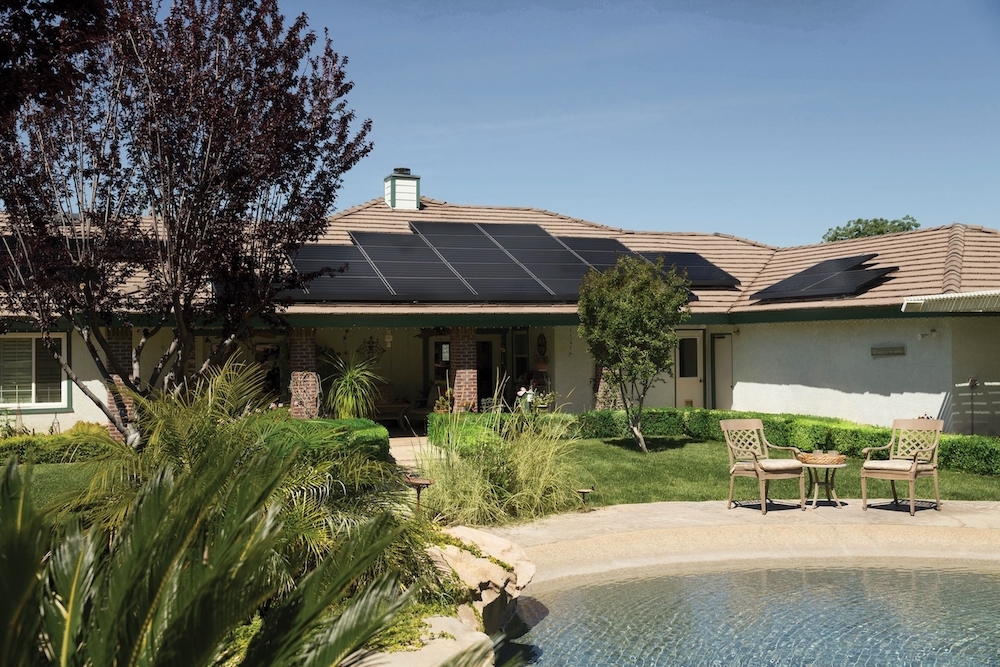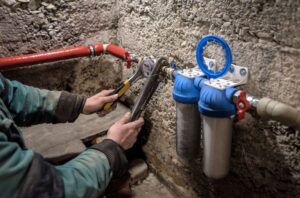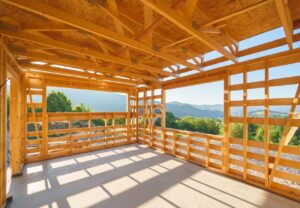Home Solar Panel Guide – According to a survey by the Pew Research Center, 46% of homeowners have given serious thought to adding solar panels to their property.
Moreover, in the first quarter of 2021, the country was able to reach a total of 102.8 GWdc of installed capacity, which is enough to power 18.6 million American homes.
This goes to show that solar power is very much transforming the energy industry — and you might want to make the switch, too, for financial and environmental reasons.
How Solar Power Works
The sun produces solar energy which is transformed into usable solar power through a process called the photovoltaic effect.
With today’s technological developments, solar power can now be easily generated from the comfort of your own home, using a home solar energy system.
The complete parts to a basic system include the following:
- Solar Panels — Harness energy from the sunlight
- Inverter — Converts harvested solar energy into useable power for appliances
- Racking — Where you mount your system
Access to power lines immediately lets you feed solar power to the utility grid, so you won’t need any additional equipment.
If you’re off the grid, there are two more components to add:
- Batteries — Where you’ll store converted solar power
- Charge Controller — Controls your solar battery charging rate
This energy can be used to power lights, TVs, refrigerators, and other appliances. Our Homespure article the best flooring for radiant heating systems also touches on how solar panels can power home heating as well.
Pros and Cons of Going Solar
Pros
Hoymiles states the main benefit of going solar is that it gives you independence and control over your electricity management.
Solar energy is a renewable resource. Unlike fossil fuels or oil that deplete over time and usage, sunlight is an energy that is continuously generated and does not produce waste. Going solar will help lessen the world’s carbon footprint.
A solar power system can also potentially drop your electricity bill to $0. US state and federal programs are also in place to encourage people to invest in renewable energy.
Solar power also covers remote locations and is extremely dependable. Having your own system will help you avoid the inconvenience of sudden grid power outages.
Cons
A home solar power system entails a high initial investment. On the upside, the National Renewable Energy Laboratory highlights the 26% federal tax credit that you can receive for switching to solar, making you eligible to receive 30% of the total installed cost of your system as a tax credit at the end of the year.
A full system can also take up space — each panel is around 3×6 feet tall, with each system requiring around a dozen panels. However, homes equipped with solar power systems sell for 3.74% more than equivalent homes without solar.
Solar homes sell for $14,329 more on average, making the space it takes up, well worth it. The amount of solar energy gathered can also depend on location, time of day, weather, or seasons of the year.
Budgeting for Solar Panel Installations
Investopedia explains that the installation cost can depend on the type of power system. Off-grid systems generally cost the most, so grid-tied systems are the most recommended for saving money.
The location also matters: warmer states like California and New Jersey require a lower cost-per-watt. You can also search for other relevant state incentives to help you shoulder the cost. The average total cost for installations can range anywhere from $10,000 to $30,000.
Setting Up
The default, less expensive choice is to have them installed on your roof, as this will act as the foundation for the mounting hardware, but you can also opt for a ground mount.
Although this is pricier, the standing setup makes it possible to install more panels and provides easier access for repairs and maintenance.
Often solar panel kits already contain all the necessary hardware to help you install them on your own. You may also hire services to help you with troubleshooting and setting up.
There are also mobile applications and programs to help you manage and monitor your home solar panel guide.
By investing in your own home solar panels, you won’t just save yourself from high electricity bills — you’ll also help with saving the environment from the harmful carbon emissions generated from non-renewable resources.
After all, solar is now more cost-competitive compared to fossil fuel-based energy, and countries worldwide are now striving to create a more solar-powered future.





